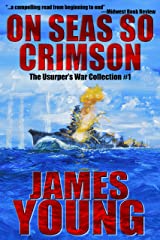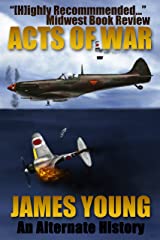As you guys may have noticed, I am completely willing to lean on the works of others. With that in mind, for today’s discussion, we’ll talk about a topic which as absorbed much ink: decks. Specifically, armored vs. unarmored iterations thereof.
So, without further ado, I’ll turn it over to the video host Drachinifel and his very helpful 5 minute video on the design process / doctrine differences between armored and unarmored flight decks.
*waits for people to actually watch the video*
[UPDATE] Or see a much longer video with two British naval historians.
As I mentioned in the last iteration of carrier doctrine, the above design decisions made for a very different air group capacity. However, that being said, I 100% agree with the Royal Navy’s considerations given how they expected the war to unfold. Yes, the trade off is a small air group, but the Royal Navy wasn’t expecting to spearhead an assault on the European continent from the sea versus nibbling at the periphery / conducting convoy protection. As Drachinifel points out, when you expect to have literally dozens of enemy squadrons in range, there comes a point where your vessel better be able to take a lick.
Illustrious’ experience during World War II is an excellent example of this. For those unfamiliar with the story, Illustrious made a wonderful nuisance of herself with the Italians, to include making a house call to Taranto. Indeed, the Illustrious so upset the Axis apple cart in the Med that the Germans decided to have Fliegerkorps X throw her a Stuka party off Malta in January 1941. As you can see from J.A. Hamilton’s painting done for the Imperial War Museum, the Germans threw a lot of ordnance at Illustrious. They tossed even more at her after she managed to limp into Malta Harbor. Despite multiple bomb hits, however, the carrier’s powerplant was not critically damaged. Thus she managed to sail to the “neutral” United States for repairs. Now, there is some discussion of just how much damage the beating did to her hull and longevity or whether armored flight deck even did its job. I find a lot of this to be really nifty sophistry, as the bottom line is she survived.
(Note: “Neutral” is in quotations above for what I would think are pretty obvious reasons. When you’re repairing one belligerent’s warships basically free of charge, one is no longer neutral. Sure it all worked out in the end, but seriously?)
Now compare and contrast this with the fate of the Akagi, Kaga, Hiryu, and Soryu at Midway. While, yes, Japanese ordnance handling and damage control were partially to blame, once again the bottom line is that each of the carriers was undone solely by American 500 and 1000-lb. bombs. Or put another way, the Japanese CAP more than did its job against the American torpedo bombers, only to have as little as one bomb see off a fleet carrier. Is that a slight simplification regarding the Kido Butai‘s demise? Oh yes. But I’d also argue that Princeton (sunk at Leyte Gulf by a single bomb hit), Franklin (mission killed off Japan by two bombs from a single aircraft), Yorktown (briefly knocked dead in the water by a pair of bomb hits at Midway), and Enterprise (nearly a mission kill at Santa Cruz through bomb damage) all illustrate instances an armored flight deck might have saved lives and kept a carrier in the fight from limited strikes.
(Note: I am specifically not addressing kamikazes. This was so outside the realm of things designers could expect that dinging people for choices doesn’t make much sense. Not even the Japanese expected they’d be sending teenagers on one way strikes by 1945.)
The above is a polite way of saying that anyone who gets, shall we say, jingoistic about there only being one “correct” way of carrier design prewar can probably be safely discounted. Both the USN and RN had good reasons for doing what they did and, in a way, both are lucky that they were able to fight their flattops in the theater that was intended from 1939-1942. Fliegerkorps X vs. a USN flattop circa early-1942 is the stuff of nightmare fuel. Somerville vs. Nagumo during the Indian Ocean Raid should similarly be the kind of thing that requires changing one’s bedding.
By 1943, the advances in damage control, radar, FDC, and fighter aircraft kind of made the initial design questions seem quaint. In the Mediterranean and off Norway, Allied carriers operated well within the Luftwaffe‘s threat envelope without damage. In the Pacific, the Japanese would find out by several times that TF 38/58 could overwhelm a local fighter force and still maintain a killer CAP bolstered by excellent AA. When the British Pacific Fleet arrived in force during late 1944, both purchased American aircraft and their own developments allowed them to also provide a credible defense / offense mix. In short, as often happens in wartime, the unforeseen had made most debate on “proper” carrier design superfluous.


